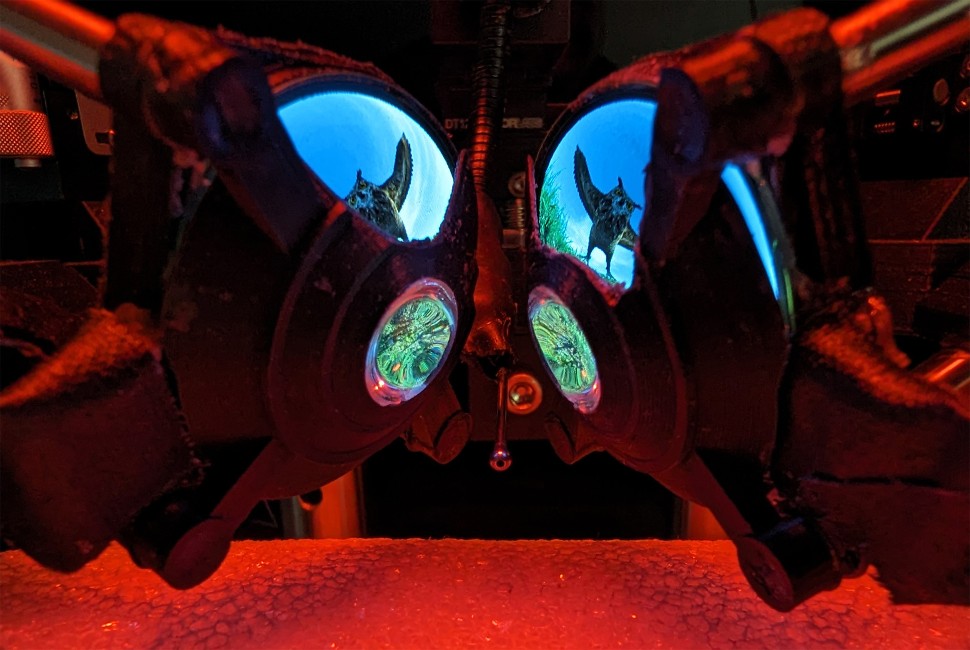Northwestern University researchers have developed new virtual reality (VR) goggles for mice.
Besides just being cute, these miniature goggles provide more immersive experiences for mice living in laboratory settings. By more faithfully simulating natural environments, the researchers can more accurately and precisely study the neural circuitry that underlies behavior.
Compared to current state-of-the-art systems, which simply surround mice with computer or projection screens, the new goggles provide a leap in advancement. In current systems, mice can still see the lab environment peeking out from behind the screens, and the screens’ flat nature cannot convey three-dimensional (3D) depth. In another disadvantage, researchers have been unable to easily mount screens above mice’s heads to simulate overhead threats, such as looming birds of prey.
For humans, this is like watching a TV in your living room.”
The new VR goggles bypass all those issues. And, as VR grows in popularity, the goggles also could help researchers glean new insights into how the human brain adapts and reacts to repeated VR exposure — an area that is currently little understood.
The research was published today in the journal Neuron. It marks the first time researchers have used a VR system to simulate an overhead threat.
“For the past 15 years, we have been using VR systems for mice,” said Northwestern’s Daniel Dombeck, the study’s senior author. “So far, labs have been using big computer or projection screens to surround an animal. For humans, this is like watching a TV in your living room. You still see your couch and your walls. There are cues around you, telling you that you aren’t inside the scene. Now think about putting on VR goggles, like Oculus Rift, that take up your full vision. You don’t see anything but the projected scene, and a different scene is projected into each eye to create depth information. That’s been missing for mice.”
Dombeck is a professor of neurobiology at Northwestern’s Weinberg College of Arts and Sciences. His laboratory is a leader in developing VR-based systems and high-resolution, laser-based imaging systems for animal research.
The value of VR
Although researchers can observe animals in nature, it is incredibly difficult to image patterns of real-time brain activity while animals engage with the real world. To overcome this challenge, researchers have integrated VR into laboratory settings. In these experimental setups, an animal uses a treadmill to navigate scenes, such as a virtual maze, projected onto surrounding screens.
By keeping the mouse in place on the treadmill — rather than allowing it to run through a natural environment or physical maze — neurobiologists can use tools to view and map the brain as the mouse traverses a virtual space. Ultimately, this helps researchers grasp general principles of how activated neural circuits encode information during various behaviors.
“VR basically reproduces real environments,” Dombeck said. “We’ve had a lot of success with this VR system, but it’s possible the animals aren’t as immersed as they would be in a real environment. It takes a lot of training just to get the mice to pay attention to the screens and ignore the lab around them.”



